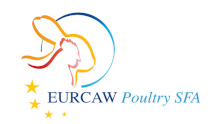Document type: scientific article published in Animal
Authors: M. Taghipoor, M. Pastell, O. Martin, H. Nguyen Ba, J. van Milgen, A. Doeschl-Wilson, C. Loncke, N.C. Friggens, L. Puillet, R. Muñoz-Tamayo
Preview: Resilience, when defined as the capacity of an animal to respond to short-term environmental challenges and to return to the prechallenge status, is a dynamic and complex trait. Resilient animals can reinforce the capacity of the herd to cope with often fluctuating and unpredictable environmental conditions. The ability of modern technologies to simultaneously record multiple performance measures of individual animals over time is a huge step forward to evaluate the resilience of farm animals. However, resilience is not directly measurable and requires mathematical models with biologically meaningful parameters to obtain quantitative resilience indicators. Furthermore, interpretive models may also be needed to determine the periods of perturbation as perceived by the animal. These applications do not require explicit knowledge of the origin of the perturbations and are developed based on real-time information obtained in the data during and outside the perturbation period. The main objective of this paper was to review and illustrate with examples, different modelling approaches applied to this new generation of data (i.e., with high-frequency recording) to detect and quantify animal responses to perturbations. Case studies were developed to illustrate alternative approaches to real-time and post-treatment of data. In addition, perspectives on the use of hybrid models for better understanding and predicting animal resilience are presented. Quantification of resilience at the individual level makes possible the inclusion of this trait into future breeding programmes. This would allow improvement of the capacity of animals to adapt to a changing environment, and therefore potentially reduce the impact of disease and other environmental stressors on animal welfare. Moreover, such quantification allows the farmer to tailor the management strategy to help individual animals to cope with the perturbation, hence reducing the use of pharmaceuticals, and decreasing the level of pain of the animal.




